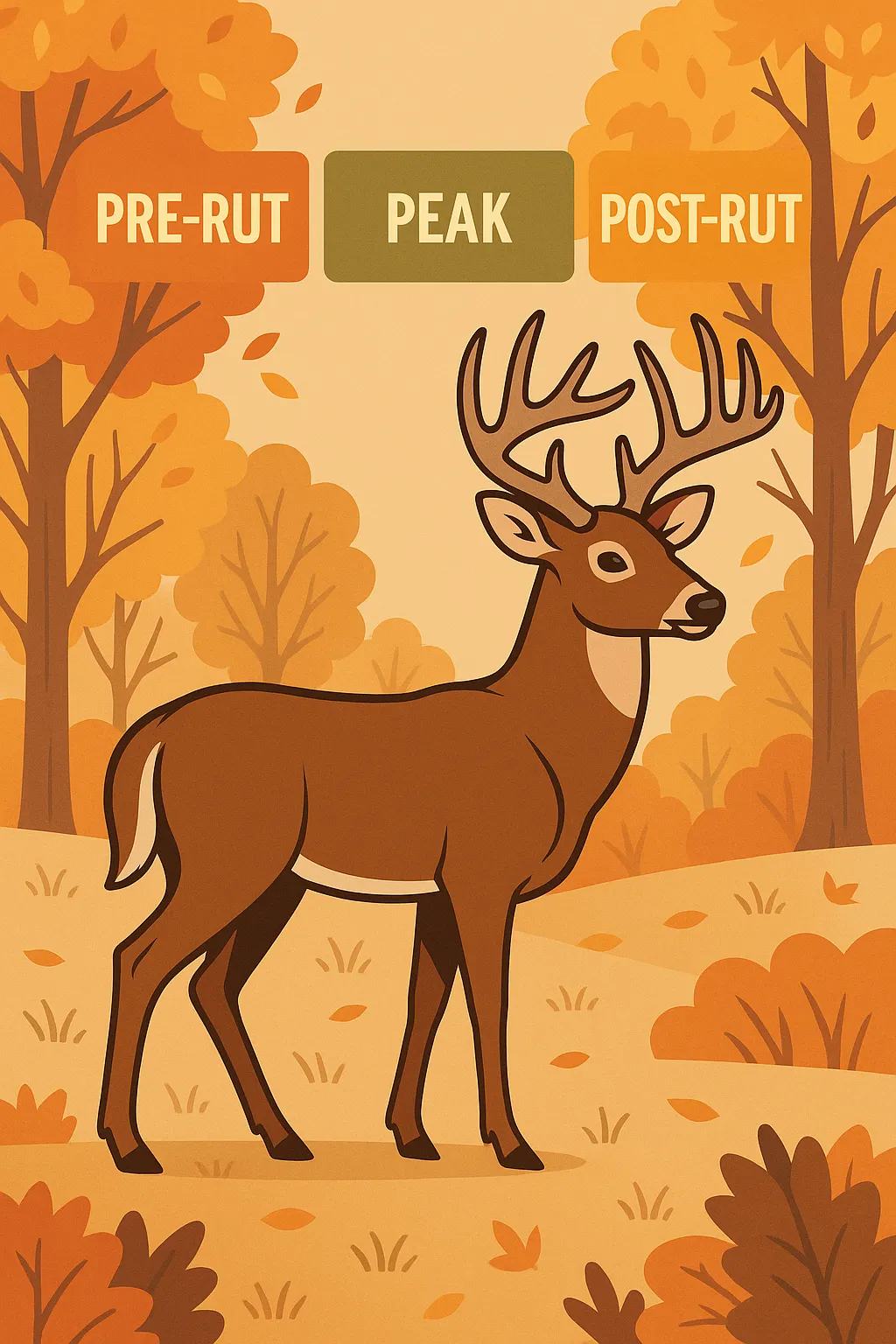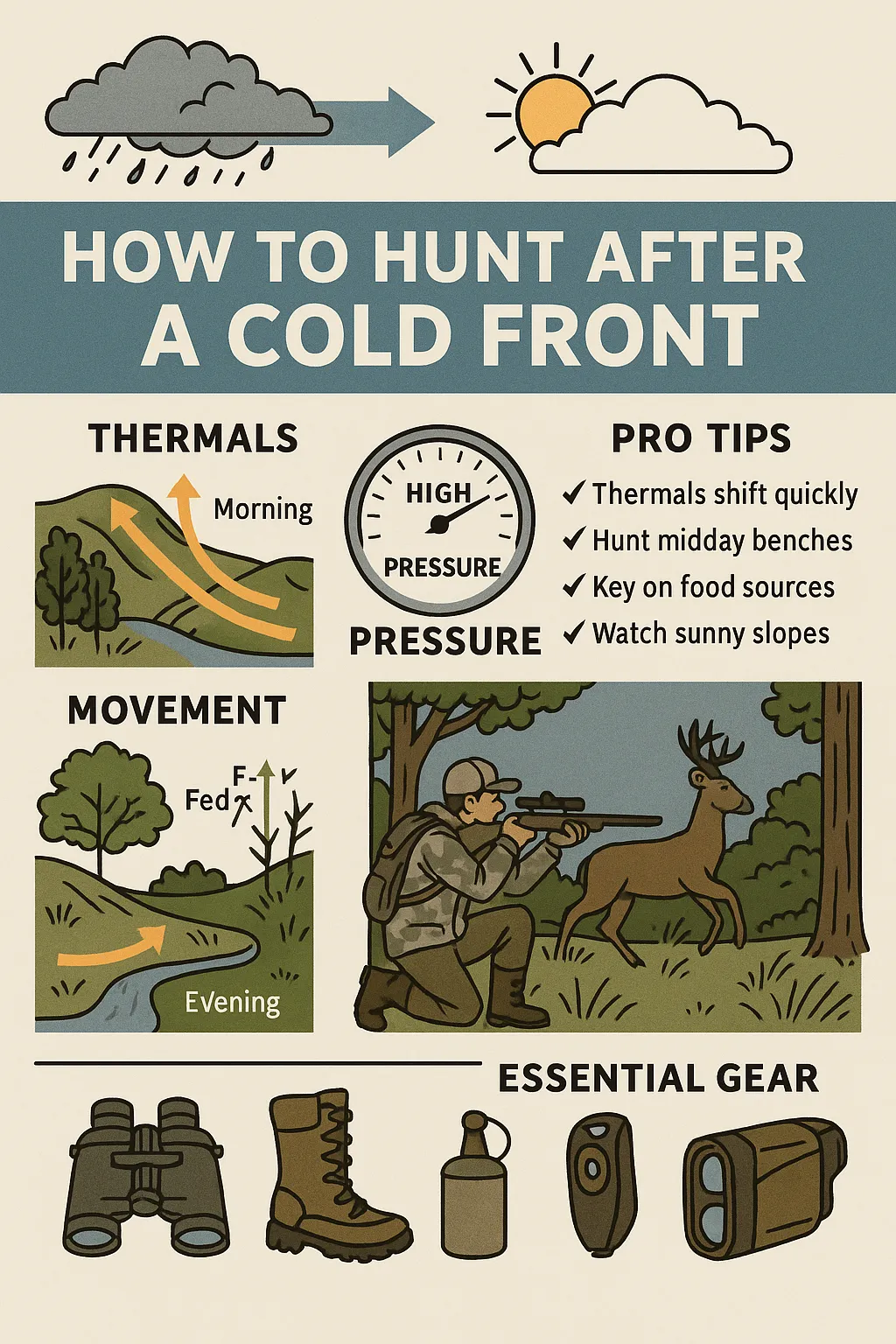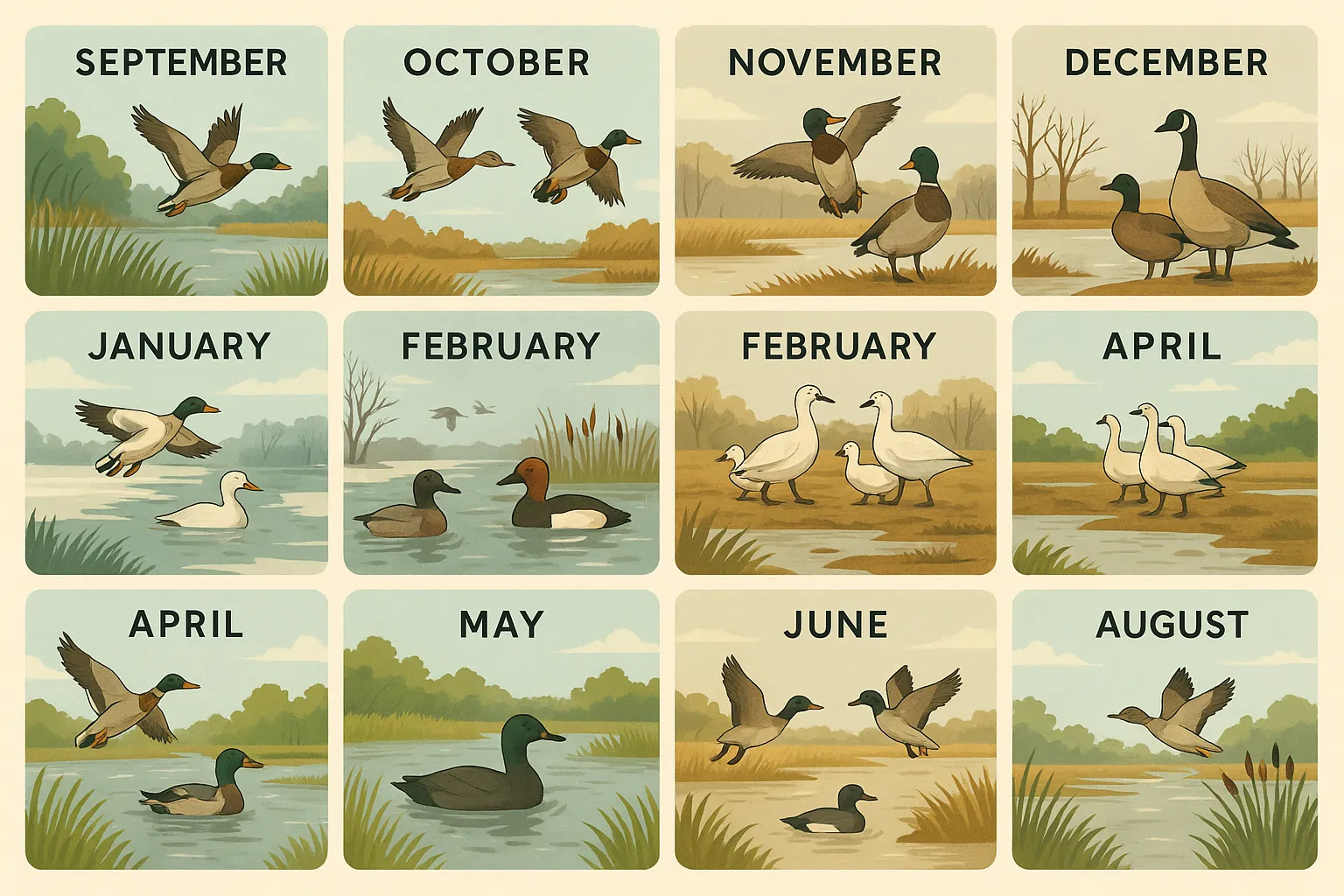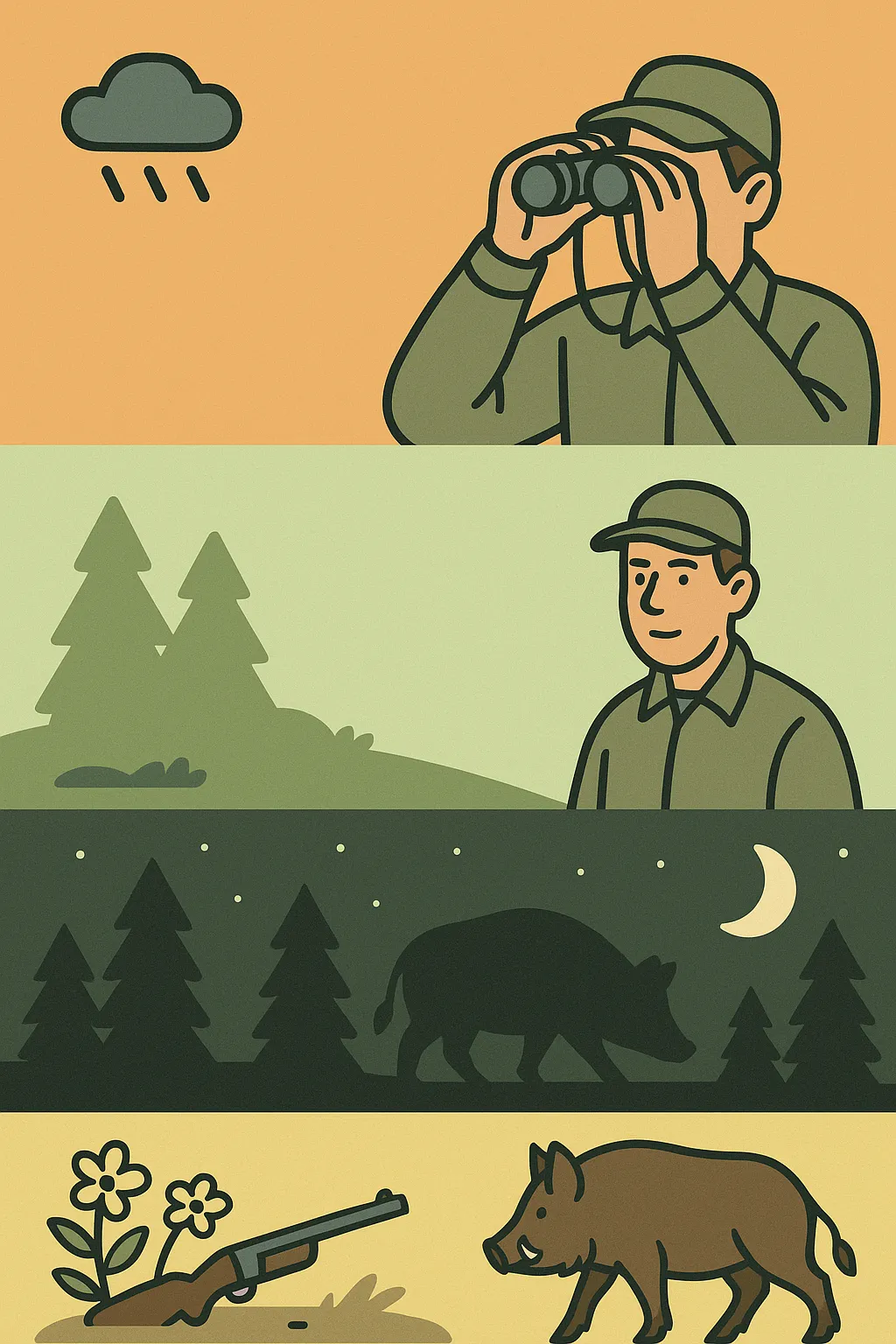
Whitetail Rut Tactics – Pre-Rut, Peak, and Post-Rut Playbooks
The whitetail rut isn’t just one magical moment—it’s a multi-phase evolution that demands different strategies for each stage. From early scrape-checking to the chaos of lockdown, understanding rut behavior can mean the difference between an empty tag and a full freezer. Here’s your pre-rut, peak-rut, and post-rut tactical playbook for whitetail success in 2025.
🌒 Pre-Rut (Late October – Early November)
🧠 Whitetail Behavior:
- Bucks are establishing territory
- Making and checking scrapes/rubs
- Daylight activity ramps up but still cautious
- Cruising begins but chasing is minimal
🎯 Tactics That Work:
- Mock Scrapes: Freshen natural lines or create new ones near bedding
- Grunt Calls: Light tending grunts pull curious bucks
- Trail Cams: Move cameras to funnels & scrape lines to ID mature deer
- Hunt Cold Fronts: Pressure rises = bucks move earlier
🎙️ “I killed my 10-point three days before Halloween after he hit a mock scrape for three nights straight.”
— Ben S., Indiana
🌕 Peak Rut (Mid-November)
🧠 Whitetail Behavior:
- Bucks are in chase mode
- Daylight movement increases significantly
- Does enter estrus—bucks are locked in
- Bucks are less predictable, covering large areas
🎯 Tactics That Work:
- All-Day Sits: Midday cruising and chasing is common
- Rattling Sequences: Simulate fights near bedding or funnels
- Estrus Bleats & Snort Wheeze: Aggressive vocalization draws in dominant bucks
- Funnels & Pinch Points: Hunt travel corridors between bedding and food
🎙️ “Sat 13 hours and saw 11 different bucks. Two fights, three chases—it was the Super Bowl of the woods.”
— Gina T., Wisconsin
🌘 Post-Rut (Late November – Early December)
🧠 Whitetail Behavior:
- Most does bred; bucks are fatigued
- Feeding becomes a priority
- Secondary rut may occur with late-cycling does
- Bucks return to core areas
🎯 Tactics That Work:
- Focus on Food: Hunt near major ag, oak flats, or late-season plots
- Cold Snap Timing: Bucks feed hard before storms
- Soft Calling: Light grunts may still provoke reaction
- Ambush Afternoons: Low-impact evening sits in feeding zones
🎙️ “My post-rut buck came on a snowy evening—he was run down and heading straight for the cornfield.”
— Matt D., Ohio
📊 Rut Phase Cheat Sheet
| Phase | Key Behavior | Best Time to Hunt | Go-To Tactic |
|---|---|---|---|
| Pre-Rut | Scraping, cruising | Mornings & cold fronts | Mock scrapes + grunt calls |
| Peak Rut | Chasing, lockdown | All-day | Rattling + rut funnels |
| Post-Rut | Feed focus, recovery | Afternoons + storm fronts | Food plots + soft calls |
🧠 Pro Tips from Veteran Rut Hunters
- Journal Rut Action Yearly: Build a trend map of rut peaks by county/region
- Wind Is Still King: Don’t blow your stand by skipping wind discipline
- Rest Stand Locations: Pressure ruins rut spots—rotate often
- Pack for Long Sits: Snacks, layers, pee bottles—stay longer = see more
🎙️ “The difference between a rut hunter and a lucky hunter is the one who sits longer, calls smarter, and plays the wind.”
— Travis N., Missouri
📣 Trusted Tools & Resources
- Apps: HuntStand RutCast, DeerCast, Spartan Forge
- Books: “Mapping Trophy Bucks” by Brad Herndon, “Whitetail Access” by Chris Eberhart
- Communities: SaddleHunter, Midwest Whitetail, QDMA Forums
Pro Tip: The rut isn’t just a window—it’s a cycle. Match your tactics to the phase, and let the deer write the playbook.
🌟 Final Word: Hunt the Phase, Not the Calendar
Chasing whitetails through the rut means adapting every week. Use your time, pressure, and setups to align with how bucks behave—not what the calendar says. From scrape lines to full-throttle chases to food-source ambushes, each phase demands a shift.
“Every rut phase has its rules. Learn them, follow them, and hunt them hard.”
Leave A Comment
Related Posts
How to Hunt After a Cold Front: Pressure, Thermals & […]
Hunting Waterfowl in the Mississippi Flyway: Monthly Breakdown The Mississippi […]
Southeastern Hog Hunting Tactics by Month Feral hogs in the […]





